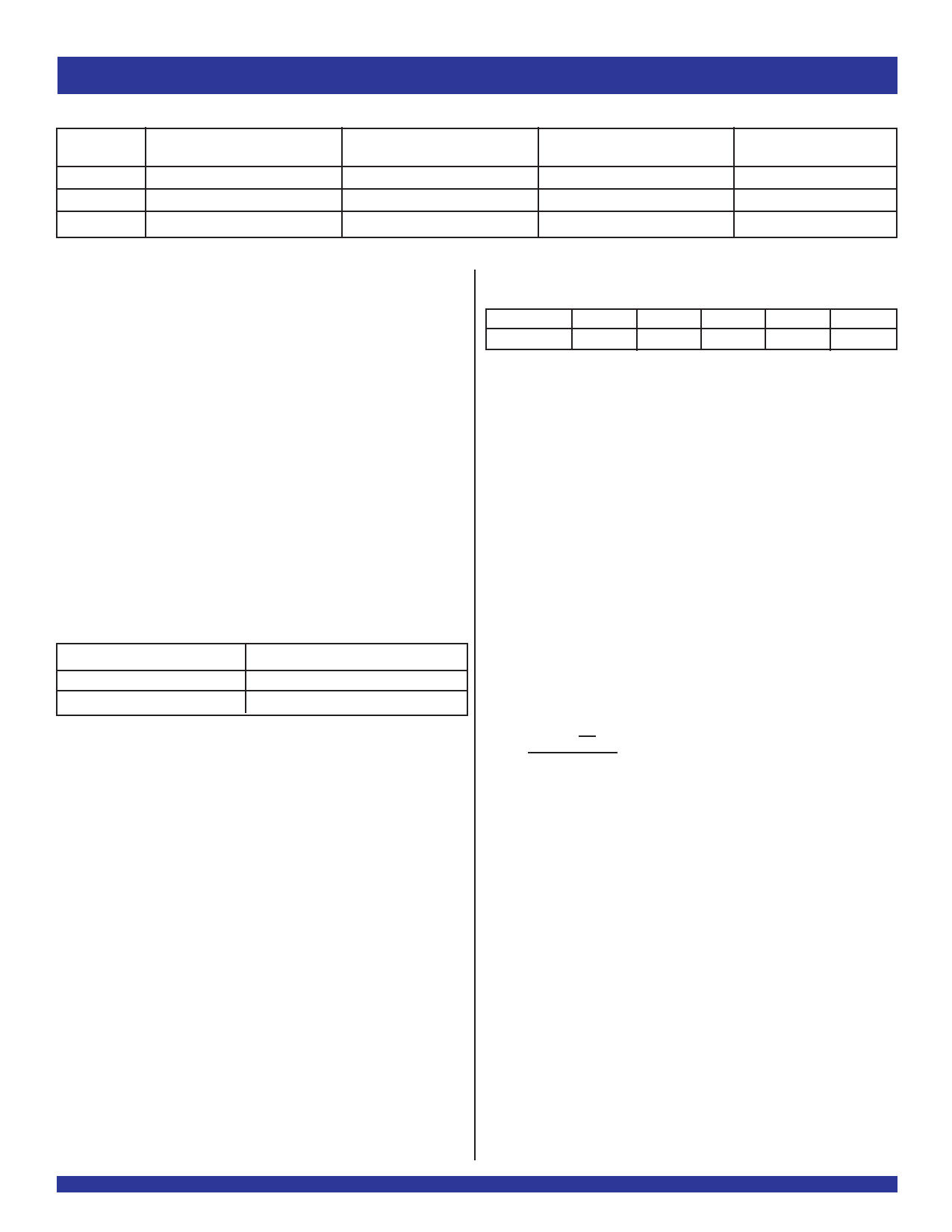5V9885TNLGI Ver la hoja de datos (PDF) - Integrated Device Technology
Número de pieza
componentes Descripción
Fabricante
5V9885TNLGI Datasheet PDF : 39 Pages
| |||

IDT5V9885T
3.3V EEPROM PROGRAMMABLE CLOCK GENERATOR
INDUSTRIAL TEMPERATURE RANGE
Pre-Divider (D) Values
PLL0
1 - 255
PLL1
1 - 255
PLL2
1 - 255
Multiplier (M) Values
2 - 8190
2 - 8190
1 - 4095
Programmable Loop Bandwidth
yes
yes
yes
Spread Spectrum
Generation Capability
yes
yes
no
REFERENCE CLOCK INPUT PINS AND
SELECTION
XTAL load cap = 3.5pF + XTALCAP[7:0] * 0.125pF (Eq. 1)
The 5V9885T supports up to two clock inputs. One of the clock inputs Parameter Bits
(XTALIN/ REFIN) can be driven by either an external crystal or a reference XTALCAP
8
Step
Min
0.125
0
Max
Units
32
pF
clock. The second clock input (CLKIN) can only be driven from an external
reference clock. Either clock input can be set as a the primary clock. The primary
clock designation is to establish which is the main reference clock to the PLLs.
The non-primary clock is designated as the secondary clock in case the primary
clock goes absent and a backup is needed. The PRIMCLK bit (0x34)
determines which clock input will be the primary clock. When PRIMCLK bit is
"0", it will select XTALIN/REFIN as the primary, and when "1", it will select CLKIN
When using an external reference clock instead of a crystal on the XTAL/
REFIN pin, the input load capacitors may be completely bypassed. This allows
for the input frequency to be up to 200MHz. When using an external reference
clock, the XTALOUT pin must be left floating, XTALCAP must be programmed
to the default value of "0", and crystal drive strength bit, XDRV (0x06), must
be set to the default value of "11".
as the primary. The two external reference clocks can be manually selected CLKIN Pin
using the GIN5/CLK_SEL pin, except in Manual Frequency Control (MFC) CLKIN pin is a regular clock input pin, and can be driven up to 400MHz.
mode 2, or via programming by hard wiring the CLK_SEL pin and toggling the
PRIMCLK bit. For more details on the MFC modes, refer to the CONFIGURING
MULTI-PURPOSE I/Os section. When CLK_SEL is LOW, the primary clock
PRE-SCALER, FEEDBACK-DIVIDER, AND
isselectedandwhenHIGH,thesecondaryclockisselected. TheSMbits(0x34) POST-DIVIDER
must be set to "0x" for manual switchover which is detailed in SWITCHOVER
MODES section.
Each PLL incorporates an 8-bit pre-scaler and a 12-bit feedback divider
GIN5/CLK_SEL
L
H
Selected Clock Input
Primary
Secondary
which allows the user to generate three unique non-integer-related frequencies.
For output banks OUT2-OUT6, each bank has a 10-bit post-divider. The
following equation governs how the frequency on output banks OUT2-6 is
calculated.
Crystal Input (XTALIN/REFIN)
The crystal oscillators should be fundamental mode quartz crystals: overtone
crystals are not suitable. Crystal frequency should be specified for parallel
resonance with 50Ωmaximum equivalent series resonance.
When the XTALIN/REFIN pin is driven by a crystal, it is important to set the
internal oscillator inverter drive strength and internal tuning/load capacitor
values correctly to achieve the best clock performance. These values are
programmable through either I2C or JTAG interface to allow for maximum
compatibility with crystals from various manufacturers, processes, performances,
FOUT = FIN *( MD )
P*2
(Eq. 2)
Where FIN is the reference frequency, M is the total feedback-divider value,
D is the pre-scaler value, P is the total post-divider value, and FOUT is the resulting
output bank frequency. The value 2 in the denominator is due to the divide-
by-2 on each of the output banks OUT2-6. Note that OUT1 does not have any
type of post-divider. Also, programming any of the dividers may cause glitches
on the outputs.
and qualities. The internal load capacitors are true parallel-plate capacitors for
ultra-linear performance. Parallel-plate capacitors were chosen to reduce the
frequency shift that occurs when non-linear load capacitance interacts with load,
bias, supply, and temperature changes. External non-linear crystal load
capacitors should not be used for applications that are sensitive to absolute
frequency requirements. The value of the internal load capacitors are determined
by XTALCAP[7:0] bits, (0x07). The load capacitance can be set with a resolution
of 0.125 pF for a total crystal load range of 3.5pF to 35.5pF. This value should
Pre-Scaler
D[7:0] are the bits used to program the pre-scaler for each PLL, D0 for
PLL0, D1 for PLL1, and D2 for PLL2. The pre-scalers divide down the
reference clock with integer values ranging from 1 to 255. To maintain low jitter,
the divided down clock must be higher than 400KHz; it is best to use the smallest
D divider value possible. If D is set to '0x00', then this will power down the PLL
and all the outputs associated with that PLL.
be set to two times the crystal load capacitance value stated by the vendor,
subtracting out board capacitance value. Check with the vendor's crystal load
capacitance specification for the exact setting to tune the internal load capacitor.
The following equation governs how the total internal load capacitance is set.
Ex.: For crystal capacitance = 12pF
For board capacitance = 3pF each leg
XTALCAP = 2x [12-3] = 18pF
6